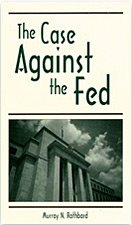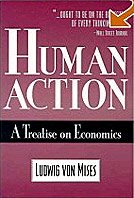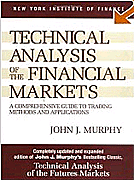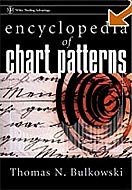Central bank dishoarding strains to meet industrial demand for gold
Gold Glows on Back of Clean-Air Movement
By Ambrose Evans-Pritchard
The Telegraph, London
Thursday, May 17, 2007
Gold is coming of age as an industrial metal in a host of uses from car catalysts to air conditioning and health care, adding 451 tonnes to global demand last year -- roughly offsetting sales by central banks.
The World Gold Council is counting on a future surge in demand for use in diesel catalysts following the invention of a new technology by the US firm Nanostellar that is more efficient and cheaper than platinum.
Gold costs $663 an ounce, while platinum has soared to $1,320 as car companies scramble to meet stricter clean-air rules.
James Burton, the WGC's chief executive, said the design could cut noxious emissions by 40 percent more than existing platinum catalysts. "With the diesel automobile market continuing to grow strongly across the globe, this is very exciting," he said.
For now, however, investment demand remains the key hope for gold bugs waiting to see the metal break out of its lacklustre trading range.
Rob McEwen, chief executive of US Gold Corp, predicted that gold would soon smash through its 25-year peak of $730 in May 2006. "I expect it to test $850 by the end of 2008, and by the end of 2010, north of $2,000, possibly $5,000," he said, insisting that dollar troubles would eventually prompt a flight to the safety of bullion.
Yesterday, however, the dollar was in fighting form after robust housing data in the US, sending gold tumbling $12 an ounce to $661. The shares of Peter Hambro Mining sank 11.2pc in London on fears of a fresh dispute with the Russian government over stated reserves.
The WGC said consumer demand in India and China was the key impetus for growth of the gold market in the first quarter of 2007. India's thriving middle class drove up sales by 50 percent year-on-year, snapping up jewellery in advance of the Akshaya Thritiya festival.
In China, the Year of the Golden Pig has boosted Chinese demand by 31 percent, with affluent city buyers opting for 24-carat bars of pure gold.
The red-hot flow of funds into Exchange Traded Funds has slowed to 36 tonnes, suggesting that western investors are becoming sated with holdings after accumulating nearly 700 tonnes in ETFs since 2003.
One of the properties of gold is that it can serve as a catalyst at low temperatures. Japanese toilets now use gold filters to break down smelly nitrogen compounds, purifying the air. Gold particles can clear smoke in air conditioning systems in buildings, or in gas mask respirators to prevent CO2 poisoning down mine shafts or in airplanes.
The pharmaceutical company CytImmune has developed a new cancer treatment using gold nanoparticles to target tumours, a treatment that appears to reduce toxic side effects.
* * *
The Telegraph, London
Thursday, May 17, 2007
Gold is coming of age as an industrial metal in a host of uses from car catalysts to air conditioning and health care, adding 451 tonnes to global demand last year -- roughly offsetting sales by central banks.
The World Gold Council is counting on a future surge in demand for use in diesel catalysts following the invention of a new technology by the US firm Nanostellar that is more efficient and cheaper than platinum.
Gold costs $663 an ounce, while platinum has soared to $1,320 as car companies scramble to meet stricter clean-air rules.
James Burton, the WGC's chief executive, said the design could cut noxious emissions by 40 percent more than existing platinum catalysts. "With the diesel automobile market continuing to grow strongly across the globe, this is very exciting," he said.
For now, however, investment demand remains the key hope for gold bugs waiting to see the metal break out of its lacklustre trading range.
Rob McEwen, chief executive of US Gold Corp, predicted that gold would soon smash through its 25-year peak of $730 in May 2006. "I expect it to test $850 by the end of 2008, and by the end of 2010, north of $2,000, possibly $5,000," he said, insisting that dollar troubles would eventually prompt a flight to the safety of bullion.
Yesterday, however, the dollar was in fighting form after robust housing data in the US, sending gold tumbling $12 an ounce to $661. The shares of Peter Hambro Mining sank 11.2pc in London on fears of a fresh dispute with the Russian government over stated reserves.
The WGC said consumer demand in India and China was the key impetus for growth of the gold market in the first quarter of 2007. India's thriving middle class drove up sales by 50 percent year-on-year, snapping up jewellery in advance of the Akshaya Thritiya festival.
In China, the Year of the Golden Pig has boosted Chinese demand by 31 percent, with affluent city buyers opting for 24-carat bars of pure gold.
The red-hot flow of funds into Exchange Traded Funds has slowed to 36 tonnes, suggesting that western investors are becoming sated with holdings after accumulating nearly 700 tonnes in ETFs since 2003.
One of the properties of gold is that it can serve as a catalyst at low temperatures. Japanese toilets now use gold filters to break down smelly nitrogen compounds, purifying the air. Gold particles can clear smoke in air conditioning systems in buildings, or in gas mask respirators to prevent CO2 poisoning down mine shafts or in airplanes.
The pharmaceutical company CytImmune has developed a new cancer treatment using gold nanoparticles to target tumours, a treatment that appears to reduce toxic side effects.
* * *
Labels: gold















![[Most Recent Quotes from www.kitco.com] [Most Recent Quotes from www.kitco.com]](http://www.kitco.com/images/live/t24_au_en_usoz_6.gif)
![[Most Recent Quotes from www.kitco.com] [Most Recent Quotes from www.kitco.com]](http://www.kitco.com/images/live/au_go_0030_ny.gif)
![[Most Recent Quotes from www.kitco.com] [Most Recent Quotes from www.kitco.com]](http://www.kitco.com/images/live/au_go_0365_ny.gif)
![[Most Recent Quotes from www.kitco.com] [Most Recent Quotes from www.kitco.com]](http://kitconet.com/charts/metals/silver/t24_ag_en_usoz_4.gif)

















0 ΣΧΟΛΙΑ (COMMENTS):
Post a Comment
<< Home